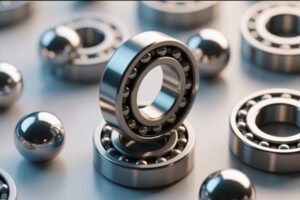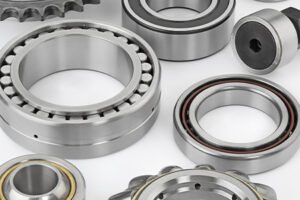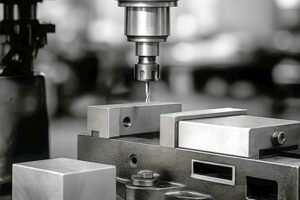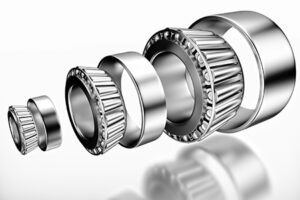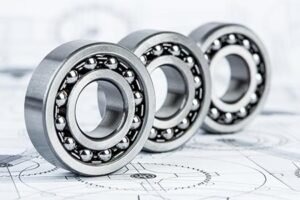As modern industrial technology continues to advance, bearings—critical components in mechanical equipment—play a vital role in ensuring operational efficiency and longevity. Among the various bearing materials, stainless steel bearings and ceramic bearings stand out due to their unique advantages and have become two of the most popular choices in industrial applications. This article will explore the characteristics, benefits, and typical applications of these two types of bearings to help you choose the right bearing for your specific needs.
1. Performance and Advantages of Stainless Steel Bearings
Stainless steel bearings are manufactured primarily from stainless steel alloys, commonly grades like 304 and 440C, known for their high hardness and corrosion resistance. Their key advantages include:
Excellent Corrosion Resistance
Stainless steel naturally resists oxidation and corrosion, making these bearings highly suitable for humid, wet, or chemically aggressive environments. This corrosion resistance ensures longevity even under harsh conditions.
Strong Mechanical Properties
Heat-treated stainless steel bearings offer high hardness and strength, allowing them to withstand substantial loads and high-speed operation, thus maintaining mechanical stability and precision.
High-Temperature Resistance
Stainless steel bearings maintain performance stability under elevated temperatures, making them ideal for applications where temperature fluctuations or sustained high temperatures are common.
Long Service Life
Thanks to their robust material properties and manufacturing quality, stainless steel bearings exhibit good wear resistance and fatigue strength, resulting in extended operational lifespans and reduced maintenance costs.
These properties make stainless steel bearings widely used in industries such as food processing, chemical machinery, medical devices, and marine equipment, especially where hygiene and corrosion resistance are critical.
2. Characteristics and Benefits of Ceramic Bearings
Ceramic bearings are primarily made from advanced ceramic materials such as zirconia (ZrO2) or silicon nitride (Si3N4). Compared to traditional metal bearings, ceramic bearings offer several unique advantages:
Extremely High Hardness and Wear Resistance
Ceramic materials possess hardness levels far exceeding those of stainless steel, which significantly extends bearing life in highly abrasive or demanding environments.
Low Density and Lightweight
Ceramic bearings are much lighter due to the low density of ceramic materials. This reduction in weight helps lower energy consumption and improves machine efficiency.
Superior High-Temperature and Corrosion Resistance
Ceramic bearings can withstand extremely high temperatures (often exceeding 1000°C) and resist corrosive substances better than most metals, making them suitable for extreme industrial environments.
Electrical Insulation
Unlike metal bearings, ceramic bearings are electrically insulating, preventing electrical currents from passing through the bearing. This property is crucial for protecting sensitive electronic equipment and electric motors from electrical corrosion damage.
Low Friction and High-Speed Capability
Ceramic bearings feature a low coefficient of friction, allowing for smoother operation at higher speeds. This reduces heat generation and energy loss, further enhancing equipment performance.
Due to these superior properties, ceramic bearings are commonly used in aerospace, high-speed motors, medical instruments, precision machinery, and chemical processing equipment.

